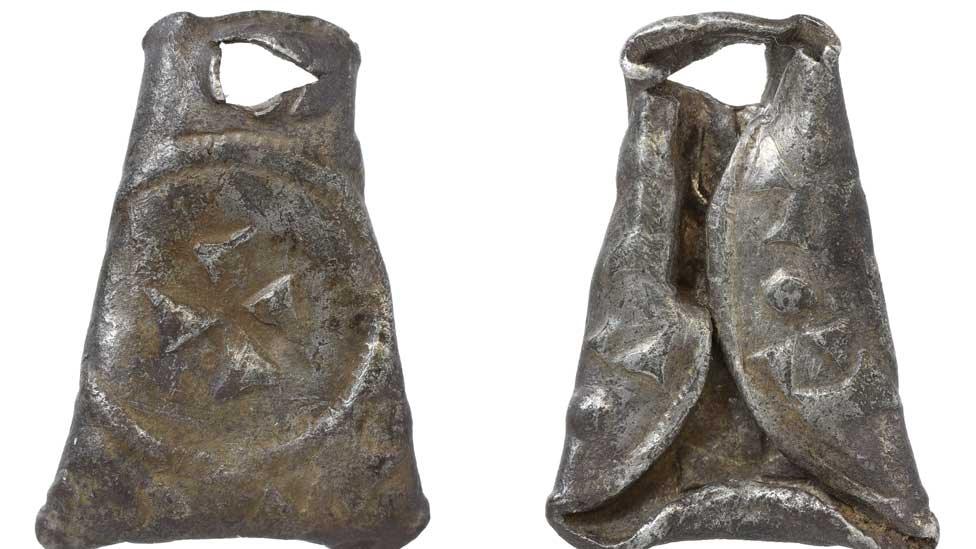Viking king's coin find of 'national significance'
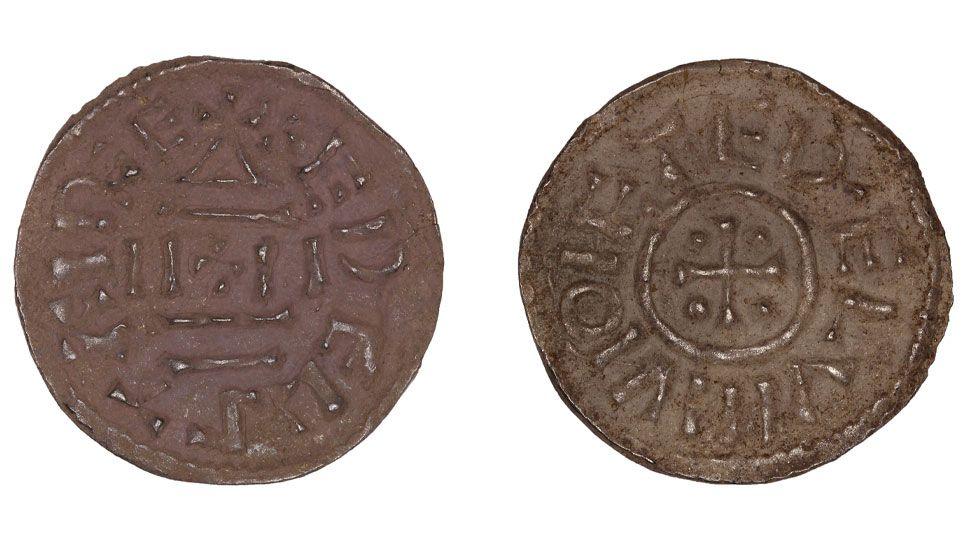
The late 9th Century coin was found by a metal detectorist near Thetford earlier this year
- Published
A rare coin minted by a Viking warlord after he became a Christian king is "the first in the country" to benefit from a new Treasure Act definition on "the basis of national significance", an expert has said.
The silver penny was made for Athelstan II, better known as Guthrum, external, who led a Danish invasion of Anglo-Saxon England and waged war against Alfred the Great.
He converted to Christianity as part of a peace deal and when he withdrew to run East Anglia as his own kingdom in AD880, began minting his own coins.
The Athelstan II temple-type penny was discovered by a metal detectorist near Thetford, Norfolk, earlier this year and is the subject of a treasure inquest.

Coin expert Adrian Marsden said the Viking leader only began minting coins after he was baptised a Christian and became king of East Anglia
The government changed the legal definition of the 1996 Treasure Act last year, external, in a bid to ensure more artefacts could go on public display.
Numismatist Dr Adrian Marsden said: "Before the law change, a single precious metal coin find would not have been declared treasure unless it had been adapted into another object like a brooch, no matter how rare.
"I believe this is the first coin in the country to fall under the new category of treasure on the basis of national significance."
What are the changes to the Treasure Act?
Previously, an item was categorised as treasure if it was at least 300 years old and made in part of precious metal, such as gold or silver, or was part of a hoard
The new criteria apply to the most exceptional finds more than 200 years old – regardless of the type of metal of which they are made – so long as they provide an important insight into the country’s heritage
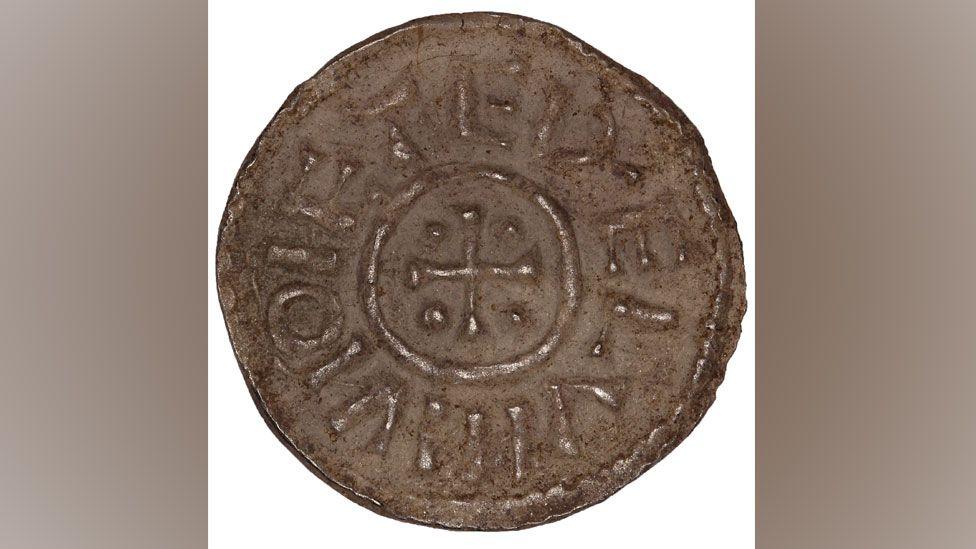
Despite being baptised with the Christian name Athelstan, he is better known by his Danish name Guthrum
Guthrum arrived in England as part of the Viking Great Army (AD865-878).
After the Danes fought and killed the Anglo-Saxon king of East Anglia Edmund, whose body was laid to rest at Bury St Edmunds, Suffolk, he took over the kingdom.
Dr Marsden said of the "rare" penny that "whoever designed this coinage is a very original person".
It was based on a temple-type coin minted for Athelstan I, external, another of Guthrum's Anglo-Saxon predecessors as king of East Anglia.
"But Guthrum only used the design on his first coins and later ones are more simple, with Athelstan Rex on one side and a cross on the other," he said.
Norwich Castle Museum is hoping to acquire the coin.
Metal detecting and the law
No search can begin until permission has been given by the landowner
All finds belong to the landowner
Finders of potential treasure in England, Wales and Northern Ireland are legally obliged to notify their local coroner
If the find is declared treasure, it must be offered for sale to a museum at a price set by the British Museum's Treasure Valuation Committee
A reward is then offered to the finders and landowner
Source: Portable Antiquities Scheme
Get in touch
Do you have a story suggestion for Norfolk?
Follow Norfolk news on BBC Sounds, Facebook, external, Instagram, external and X, external.
Related topics
- Published19 July 2023
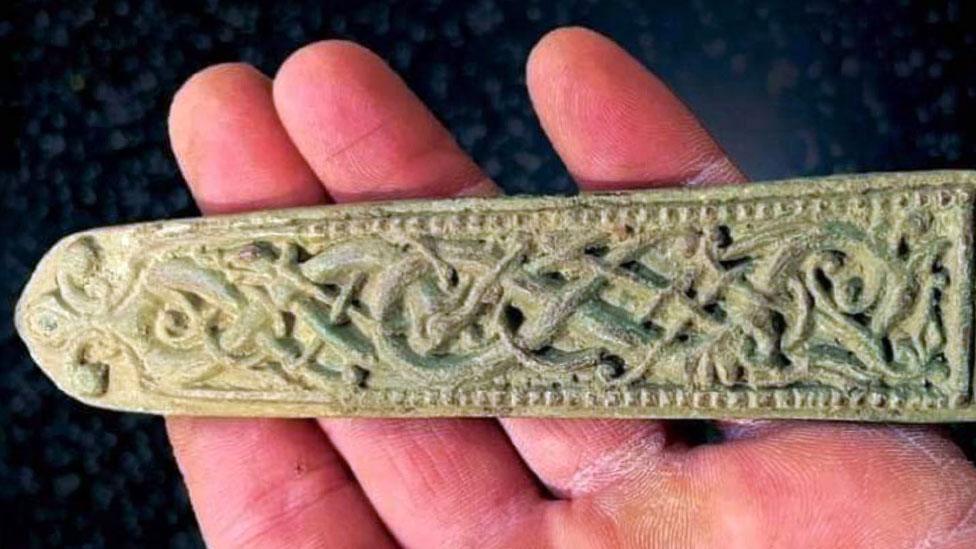
- Published3 August 2024
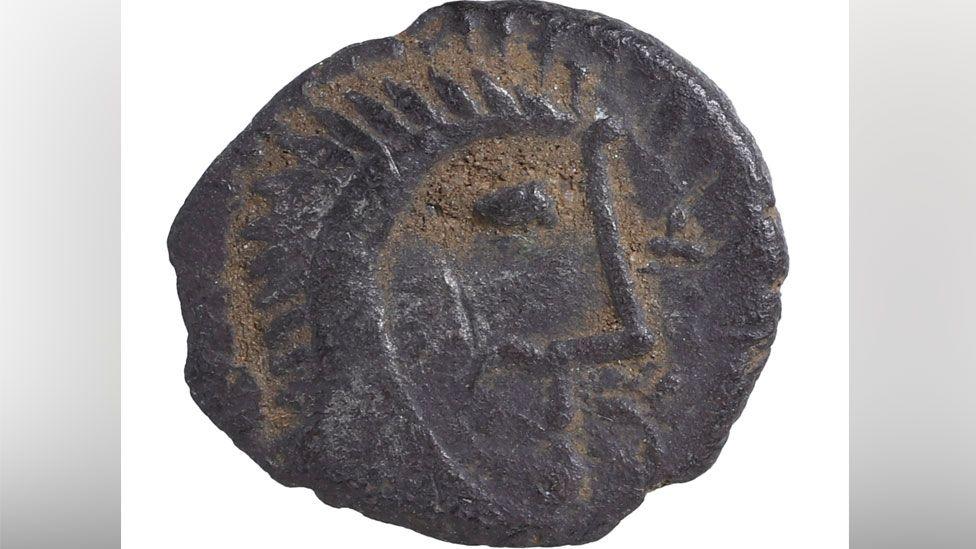
- Published28 January 2024
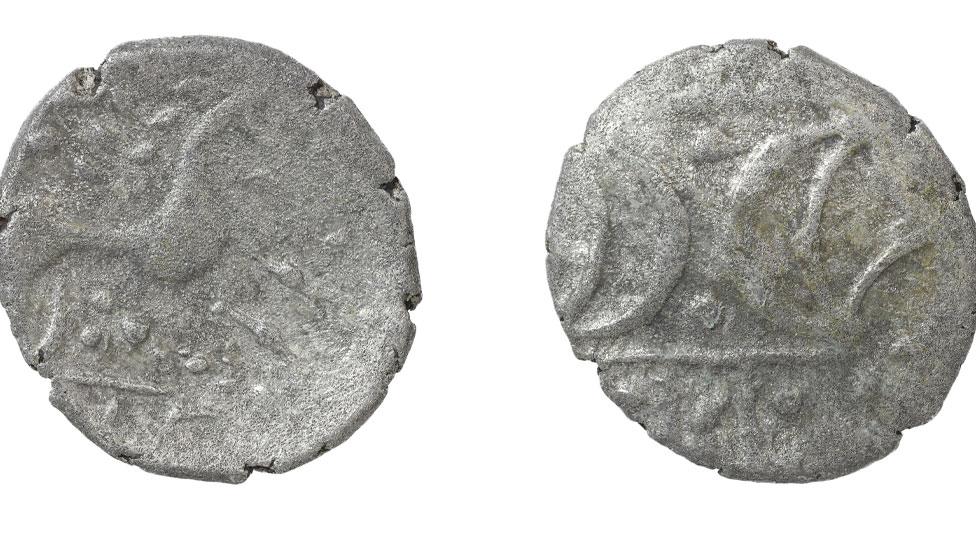
- Published18 February 2023

- Published7 August 2022
